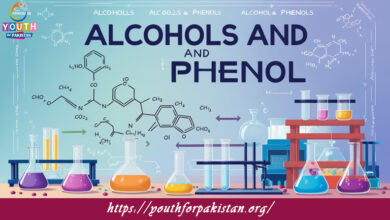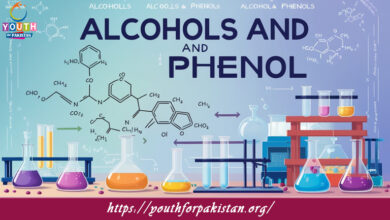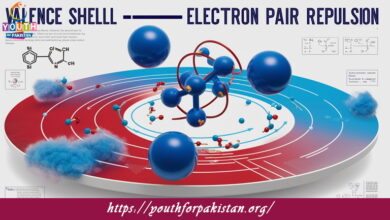Carboxylic Acids Reactivity MDCAT Quiz with Answers

Carboxylic Acids Reactivity MDCAT Quiz: Carboxylic Acids Reactivity is important in the understanding of their behavior in different chemical reactions. The carboxyl group (-COOH) makes carboxylic acids highly reactive and allows them to take part in several reactions, which MDCAT students must fully understand because organic chemistry is rooted in these, and carboxylic acids themselves are engaged in many transformation processes.
Acid-Base Reactions:
Carboxylic acids are weak acids and take part in typical acid-base reactions. The carboxyl group can donate a proton, H⁺, which can react with a base to form carboxylate ions, RCOO⁻. This reaction is analogous to the behavior of other weak acids, such as hydrogen chloride, HCl, but carboxylic acids are very weak acids because the conjugate base, the carboxylate ion, is stabilized by resonance. For example, the reaction of acetic acid, CH₃COOH, with sodium hydroxide, NaOH, gives sodium acetate, CH₃COONa, and water.
Example Reaction:
CH₃COOH + NaOH → CH₃COONa + H₂O
(Acetic acid + Sodium hydroxide → Sodium acetate + Water)
Nucleophilic Acyl Substitution:
Carboxylic acids undergo nucleophilic acyl substitution reactions: the carboxyl group (–COOH) reacts with a nucleophile, and the hydroxyl group is replaced by the nucleophile. This reaction is very important in the formation of esters, amides, and acid chlorides. For instance, when acetic acid reacts with alcohols, esters are formed via esterification reactions that hold major importance in organic synthesis.
Example Reaction (Ester Formation):
CH₃COOH + CH₃OH → CH₃COOCH₃ + H₂O
(Acetic acid + Methanol → Methyl acetate + Water)
Reduction:
Reduction of carboxylic acids affords primary alcohols. The reduction can be affected with the aid of reducing agents like lithium aluminum hydride, LiAlH₄. The carboxyl group is reduced to a hydroxyl group, thereby converting the carboxylic acid to a primary alcohol. This reaction is quite important in the synthesis of alcohols in organic chemistry.
Example Reaction:
CH₃COOH + 4[H] → CH₃CH₂OH
(Acetic acid + Lithium aluminum hydride → Ethanol)
Decarboxylation:
Decarboxylation is a reaction in which a carboxyl group is removed from a carboxylic acid as carbon dioxide (CO₂). This reaction can be performed at high heat or with reagents that specifically achieve this conversion. Malonic acid and acetoacetic acid are common substrates for decarboxylation, resulting in smaller carboxylic acids like acetic acid.
Example Reaction:
CH₂(CO₂H)₂ → CH₃COOH + CO₂
(Malonic acid → Acetic acid + CO₂)
Formation of Acid Chlorides:
Carboxylic acids can be converted into acid chlorides with reagents such as thionyl chloride (SOCl₂) or phosphorus trichloride (PCl₃). Acid chlorides are very reactive intermediates in organic synthesis and are used quite often for the preparation of esters, amides, and many other derivatives.
Example Reaction:
CH₃COOH + SOCl₂ → CH₃COCl + SO₂ + HCl
Acetic acid + Thionyl chloride → Acetyl chloride + Sulfur dioxide + Hydrogen chloride
Reaction with Alcohols (Esterification):
Carboxylic acids react with alcohols in the presence of an acid catalyst to produce esters via a reaction known as Fischer esterification. Esters are organic compounds with widespread use as flavors and fragrances. The reaction is reversible, and heating is often necessary to drive the reaction toward ester formation.
Example Reaction:
CH₃COOH + CH₃OH → CH₃COOCH₃ + H₂O
(Acetic acid + Methanol → Methyl acetate + Water)
Reaction with Grignard Reagents:
Carboxylic acids also react with Grignard reagents (RMgX) to give tertiary alcohols. The reaction proceeds via nucleophilic attack by the Grignard reagent on the carbonyl carbon of the carboxyl group. The reaction forms a magnesium salt, which is then hydrolyzed to produce the alcohol.
Example Reaction:
CH₃COOH + CH₃MgBr → CH₃COOMgBr
Acetic acid + Methylmagnesium bromide → Magnesium acetate salt
Hydrolysis: CH₃COOMgBr + H₂O → CH₃COOH + Mg(OH)Br
(Hydrolysis of the magnesium acetate salt)
Quiz: Test Your Knowledge of Carboxylic Acids Reactivity
Our MDCAT Quiz on carboxylic acids reactivity will help you check how well you understand the different reactions, including esterification, decarboxylation, and reduction. This quiz will help you assess your readiness for the MDCAT exam with focused questions on carboxylic acid behavior.
Free Flashcard: Key Insights on Carboxylic Acids Reactivity
Our Free Flashcard set on the reactivity of carboxylic acids covers all major reactions, including ester formation, reduction, and decarboxylation. Use these flashcards to reinforce your knowledge and prepare for exam questions on carboxylic acid reactivity.
Experience the real exam environment with our expertly designed collection of over 25,000 MCQs MDCAT Mock Tests.






